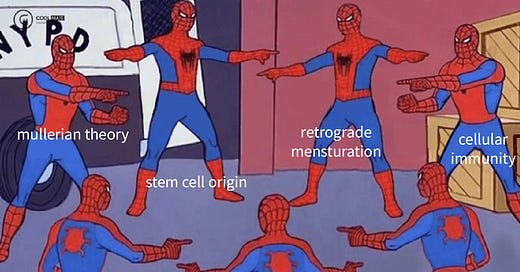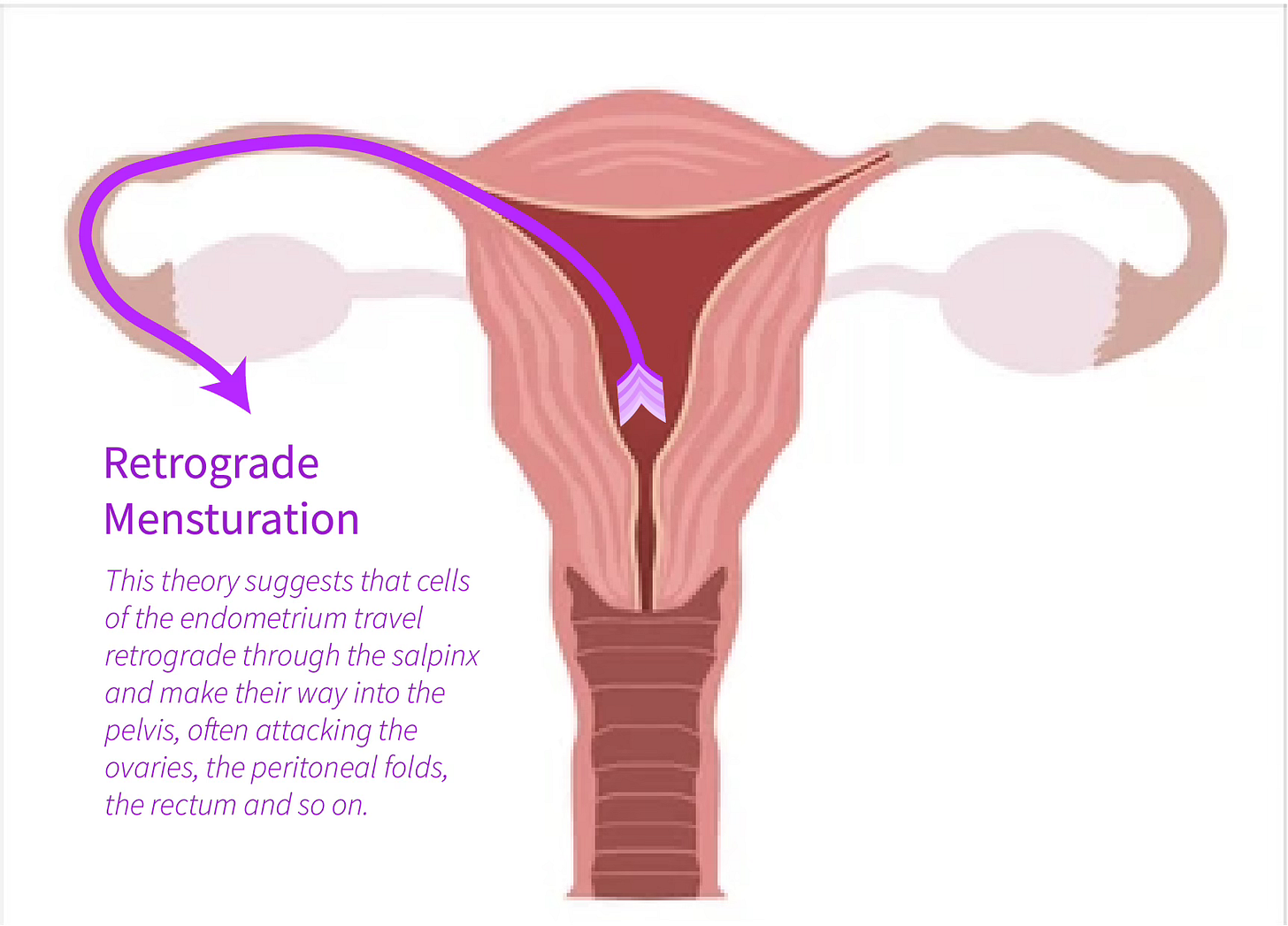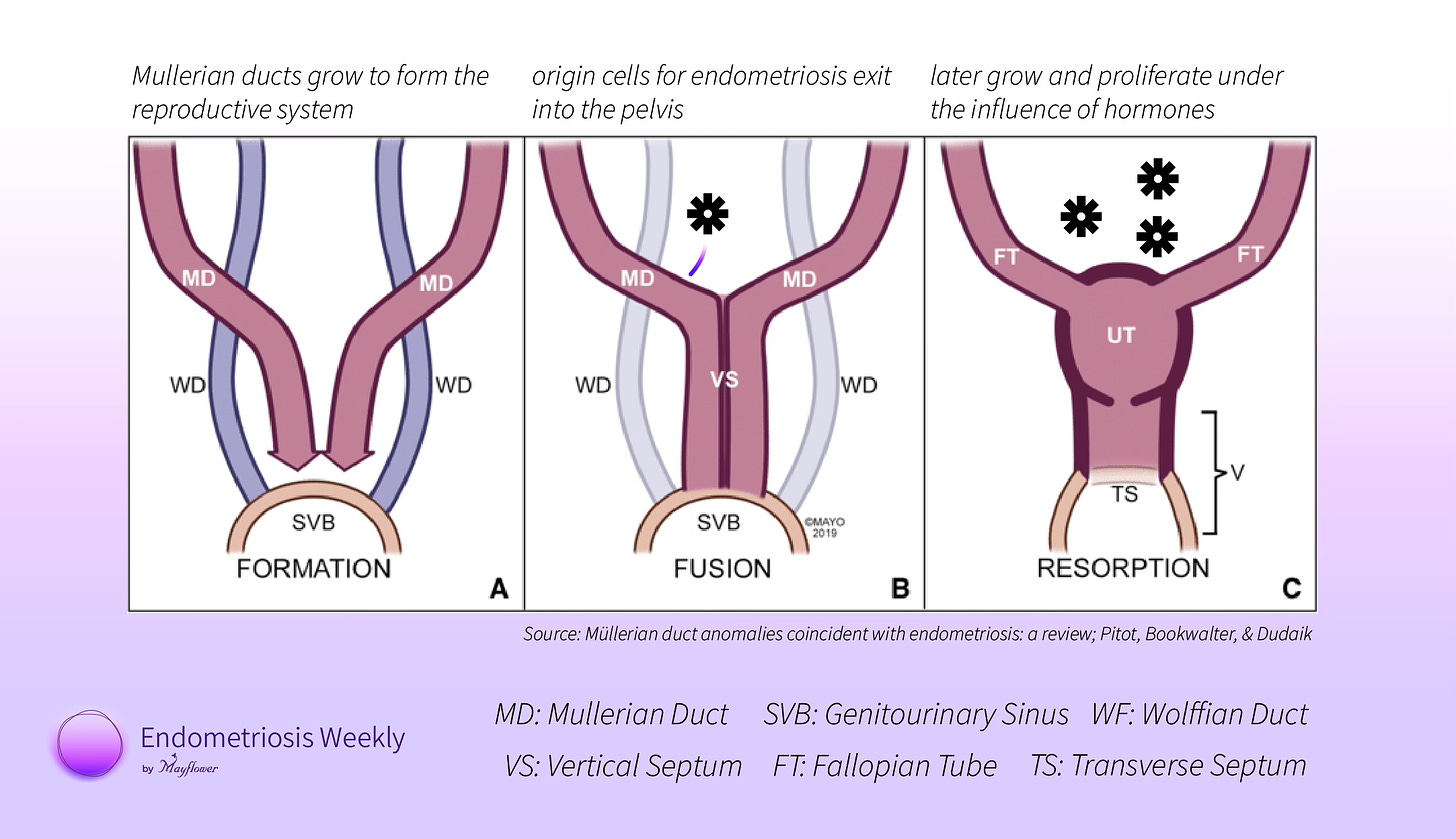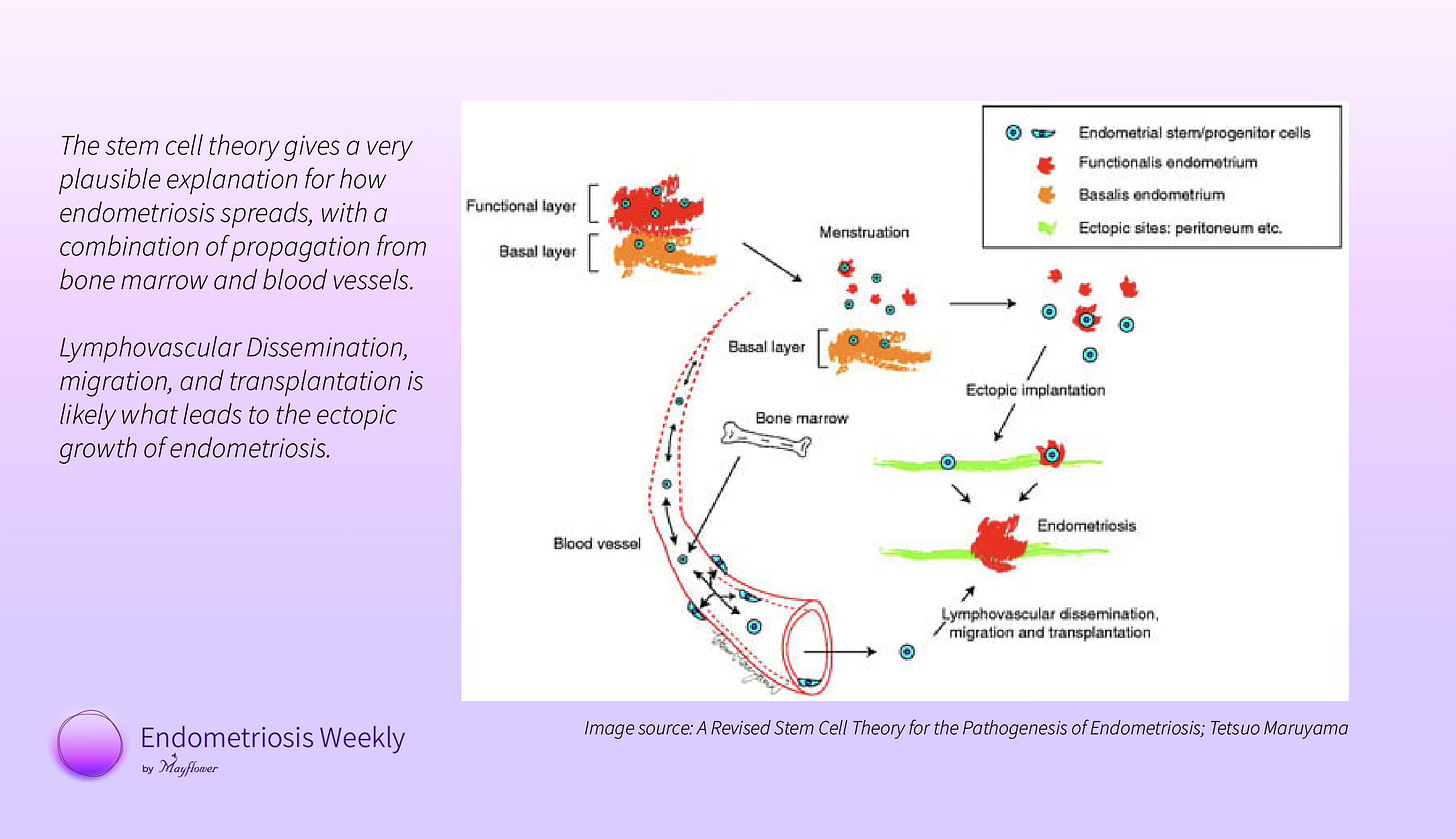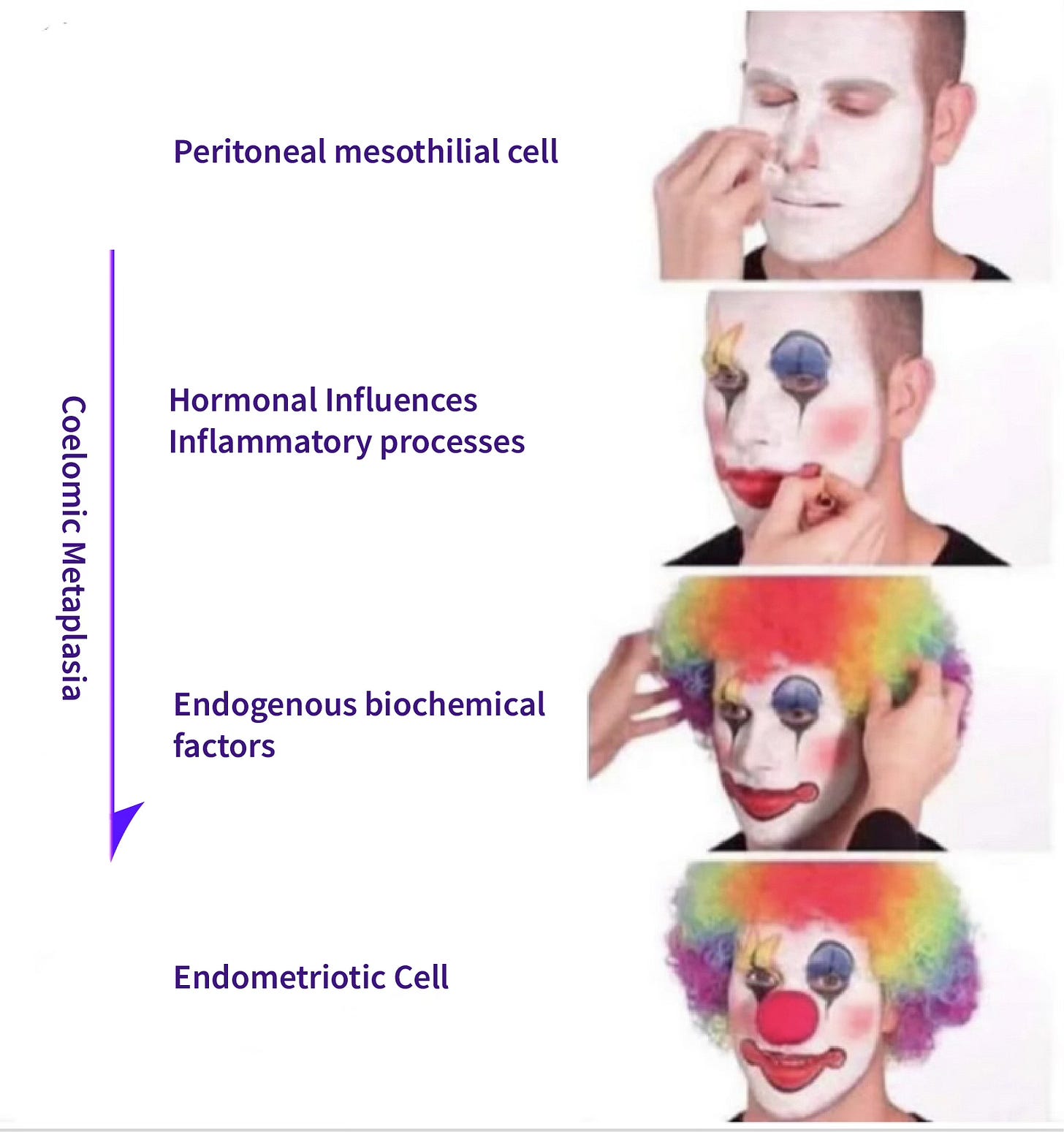The Beginner's Guide to the Beginning of Endometriosis
An easy, fun, quick, and short break down of what we know about the origins of endometriosis
Every day anywhere between 100 and 150 patients visit Mayflower in the sunny city of Ahmedabad. In a month, this number can reach about 3000. In a year, 36,000. If you remove follow up visits, and non endometriosis patients, we are still left with about 10,000 unique OPDs where this one single question is asked at least once,
“How does endometriosis happen?”
And without any regret, qualm, or crib, we answer it. 10,000 times over. Because people deserve an answer. Today, we share with you, what we know about the origins of the disease in four different theories.
Scouver research papers on the matter and you will be burdned by a barrage of answers, each explaining a likely possibility. All of them have the potential of being true. The uncomfortable and inconvenient truth is that we don’t know for sure.
To a lay person, including even your most informed patients, the differentiation almost becomes meaningless. Which is why picking the most plausible theories is important.
Of course, Endometriosis weekly is not a journal. Our purpose is to spark within you a sense of inquiry and trial. So without going into the extreme technical depths of how endometriotic tissue growth may function (we’re fully capable of doing that), we will gloss over the theories so you have some of the nuggets to share with your patients just like we do.
Of all the possible answers, there are four that spark the most amount of interest, and seem to have the most support from the scientific community.
Let’s pick retrograde mensturation first.
With the most number of fans around, this is a theory that suggests that some of the sheded cells of the endometrium (the internal lining of the uterus) travel backwards, through the fallopian tubes, out through the fimbria and into the pelvis.
Eventually under the influence of hormones, they grow and shed with each cycle.
But there still are types of endometriotic occurances that it fails to explain. Critiques of this theory have also argued that there have been signifiant differences observed in the cells of endometriosis and the cells found in the endometrium essentially debunking this retrograde movement as a cause for endometriosis itself.
That being said, large factions of the medical community believe in this idea and more evidence on its confirmation or denial is awaited.
Next is the theory of Müllerian Rests.
As you might remember from your embryology class, the Mullerian Duct and the Wolffian Duct are structures that form in the process of development of the urogenital system in males and females.
The theory of Mullerian Rests suggests at that the time of the Mullerian Duct fusion and subsequent septum degenration, some cells from the structure make their way out of the system and rest in the pelvis. Eventually they start to grow and shed under the influence of growth factors and hormones, and that’s how you get endometriosis.
This theory is more in line with the critiques of the retrograde mensuration theory since it allows for significant change in the nature and structure of the cells owing to their early separation from their intended growth path. In the pelvis, they may be impacted by different growth factors and that could lead to a whole new type of cell. However, that’s conjecture.
Now comes the stem cell theory.
It is similar to the theory around Mullerian rests and the theory of mesothelium origin, as all of them suggest a congenital or embryonic origin to the disease.
The stem cell theory suggests that cells responsible for the regeneration of the endometrial lining play a role in the development of endometriosis. The spreading of these stem cells to ectopic regions can then lead to the differentiation of endometrial cells and eventual endometriosis.
This theory also explains why some young girls develop pre-menarche endometriosis where the influence of hormones is completely missing. While there aren’t many fans of this theory, its merits lie in its plausibility given the various anomalies possible in the course embryonic development.
Not to mention, there’s peer reviewed scientific evidence to prove it’s likelihood.
And the last likely, the most fantastical and intriguing of all
The Coelomic Metaplasia Theory.
This theory refers to the metaplasia or an unwanted transformation in the colonic tissue leading to endometrial growth.
Similar to how stem cells transform into endometriosis cells, here also, coelomic cells split away from their parent structure and inadvertently transform into endometriotic cells and tissue.
The most common form of endometriosis, which could be explained by this theory is ovarian endometrioma. The mesothelium, which derives from the coelomic epithelium covering the ovary, has great metaplastic potential and can invaginate into the ovarian cortex. These mesothelial inclusions could be transformed into endometriosis by metaplasia. Growth factors, which influence this phenomenon, are still unknown.
The Main Theories on the Pathogenesis of Endometriosis: Lamceva, Uljanovs, Strumfa, et. al.
On a lighter note, this is how we like to imagine it happen
Here’s a summary picture that puts together all theories

For all we know, this disease is multifactorial. None of these theories may be right. Maybe all of them are right. Maybe there are more that we are yet to discover. And if so, we’ll look forward to it!
For now, this is it. Let us know what you thought in the comments below!


